I make no apologies for my love of plants or for cramming this garden overly full with family members of plants that I adore. By love at first sight or a slow progression to become a favorite, I then search to obtain close cousins, certain I will have the same affection for other family members.

The challenge in the garden is to fit the many pieces (and collections) into a somewhat cohesive whole. While there was little thought about developing garden rooms or hidden views, these happened without forethought, I think. While I’ve intentionally planted contrasting textures, colors are not my priority, and occasionally variegated leaves clash side-by-side. There are few mass plantings, but instead, there are many marvelous specimens. It works, I think.

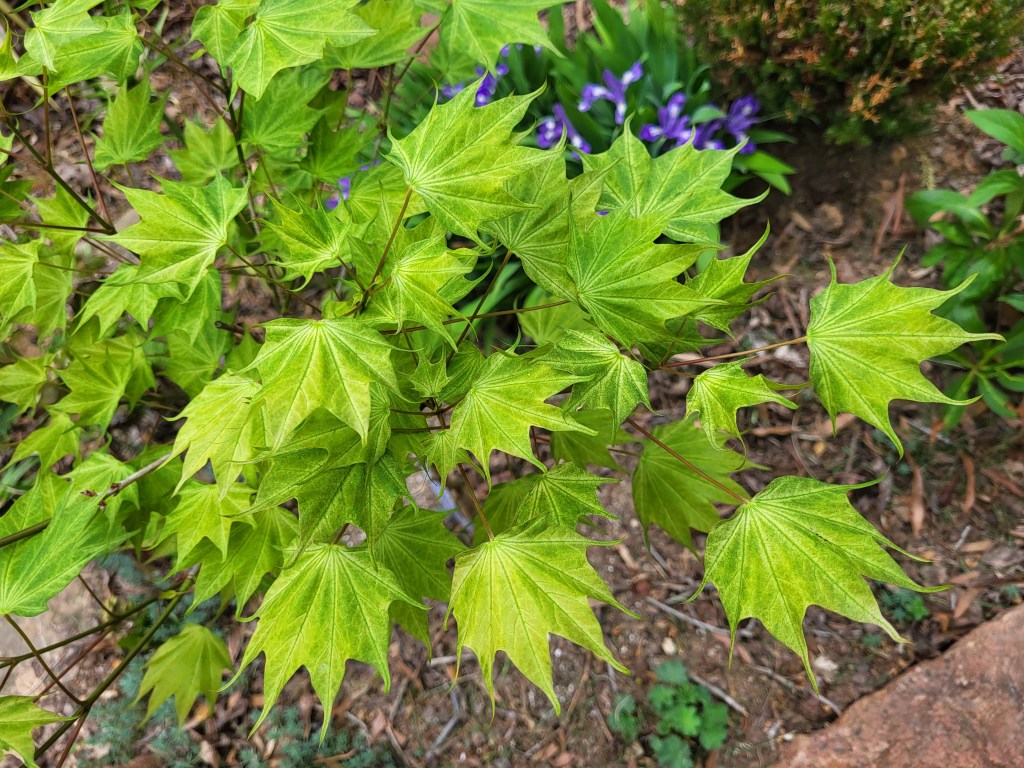
At the top of the heap is the collection of Japanese maples (above and below), both in quantity but also in the space occupied and value in the garden. With thirty-some maples in the ground and a handful or two in pots, the collection is a small fraction of ones available. I have no plans to increase the numbers by adding containers to the already overcrowded patios. Ones in pots serve as potential replacements when a gap in the garden opens, and hopefully, when the time comes, the tree is of sufficient size to blend into the mature landscape.
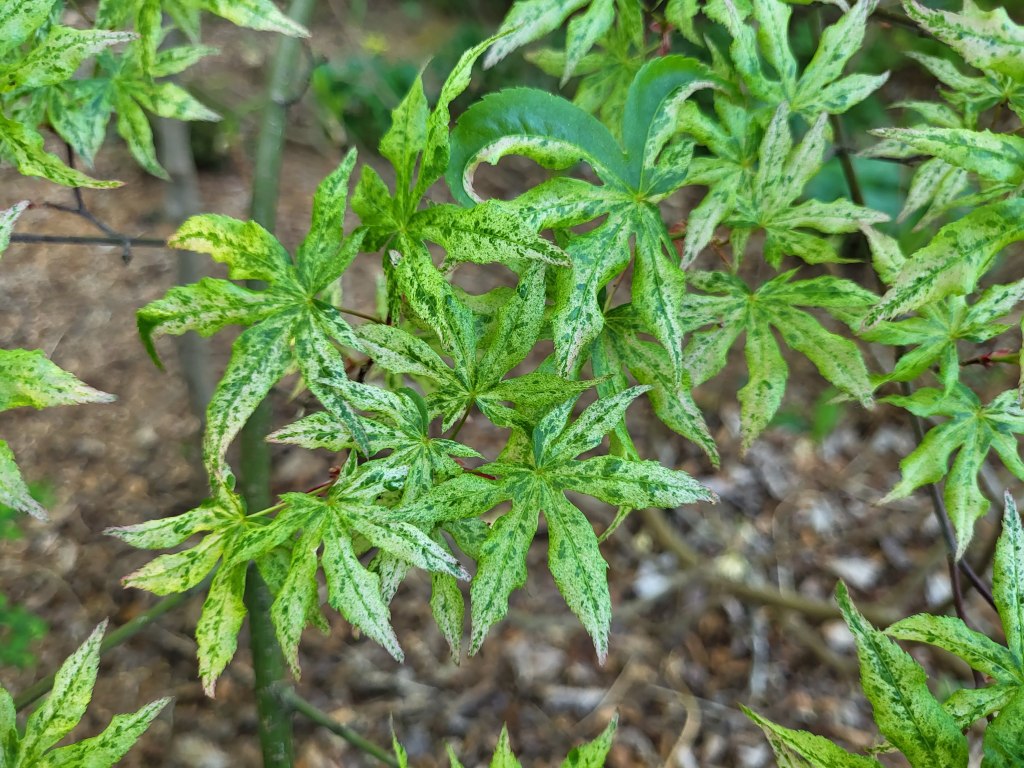
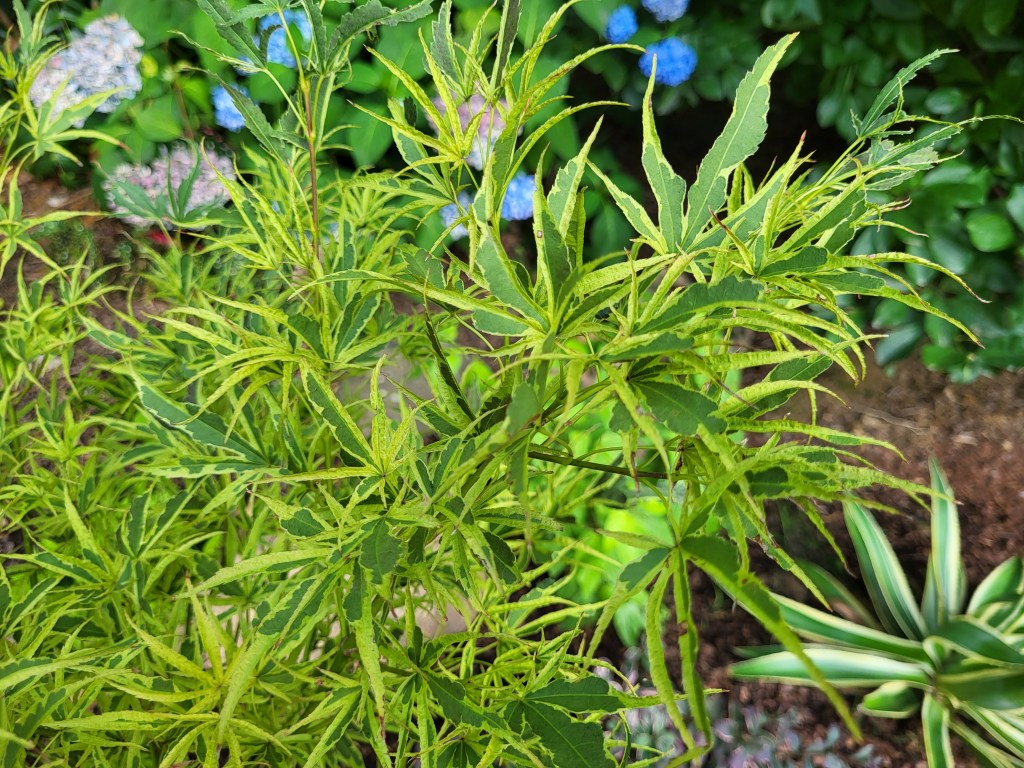

A recent obsession has doubled (tripled?) the number of redbuds (Cercis) in the garden. With somewhat limited space, I see little need to plant the many green leafed varieties, though a few have slipped in alongside ones with yellow, red, and variegated foliage. After months of internal debate, an ideal position was recently found for a variegated ‘Carolina Sweetheart ‘ (below).


In this space along the driveway, five redbuds of varying leaf colors are planted in relative close proximity. Several are newly planted in the past year, though all are of sufficient size to stand out against a green background of holly and camellias.

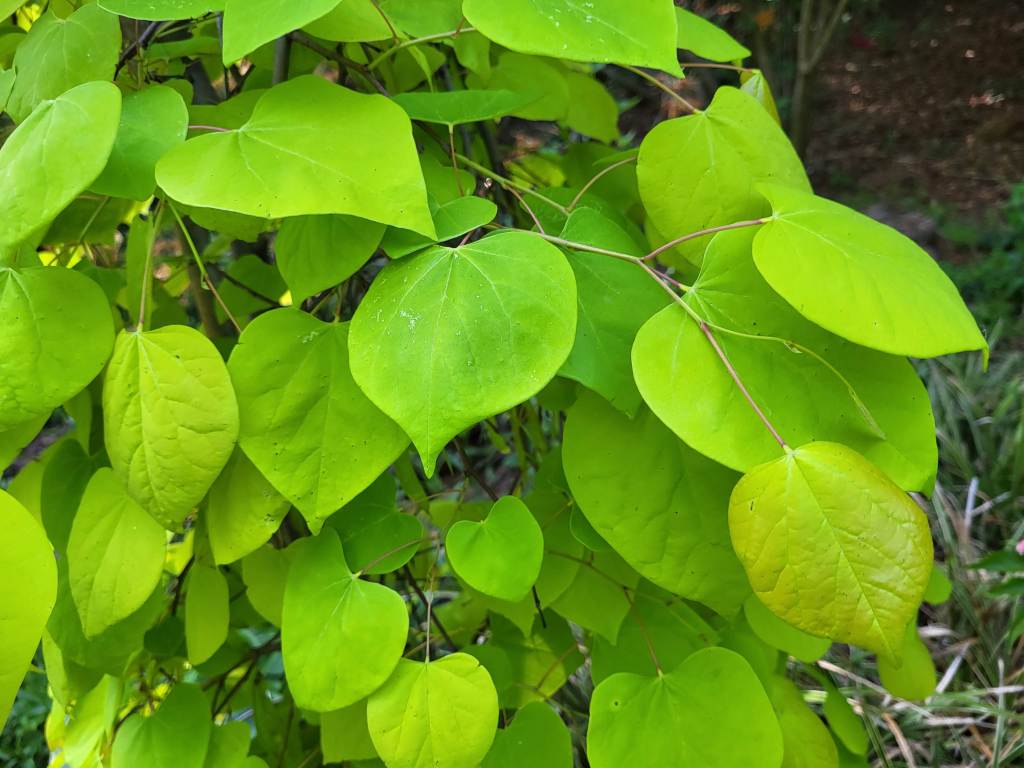

Happily, I report that the variegated mutation of the yellow leafed ‘Rising Sun’ (below) is growing vigorously in its third year. I continue to watch for reversion to yellow or green leaves, but I am now confident that this redbud might be the lone tree from a tree grower’s field to escape the disease that is unfortunately now too commonly killing young trees. The disease seems to be confined to the nursery growing process, so there is little danger to established redbuds in the garden.

As we exit this chapter, with another soon to follow, I must include the rather unexciting collection of hollies (below) . Most stand in the background until late autumn, but I could not be without this group of mostly evergreens. Besides their evergreen foliage and masses of red berries, many arouse treasured memories of years of bouncing through fields of trees and evergreens in the mountains of North Carolina and eastern Tennessee where I purchased trees over four decades.
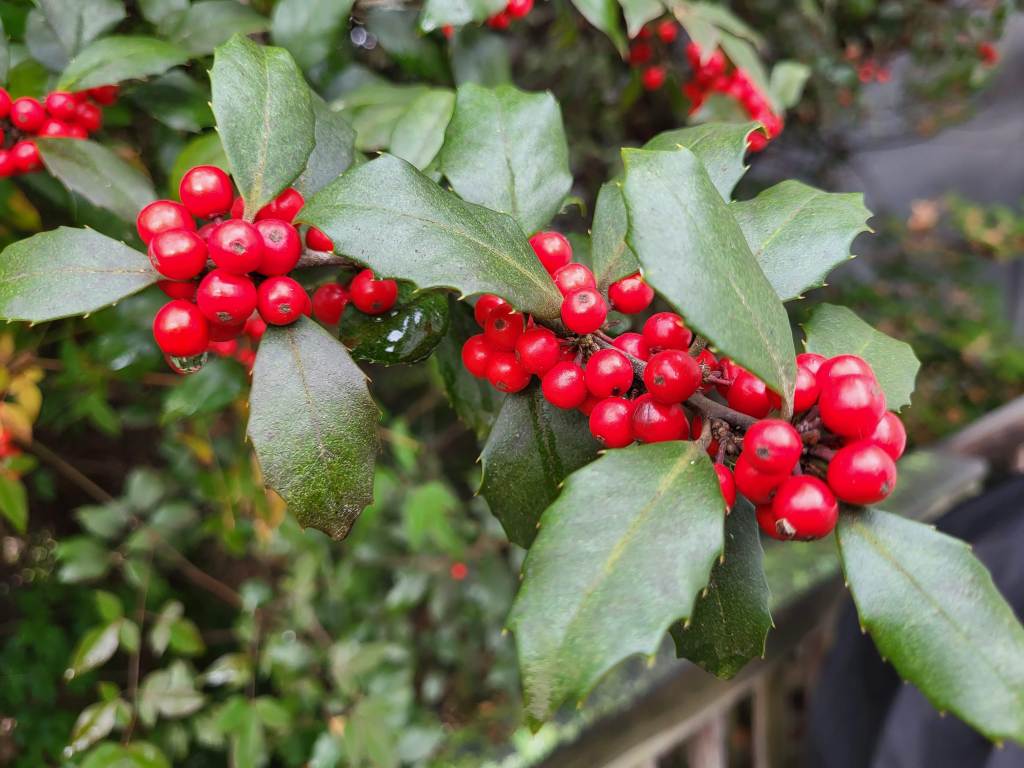

While many of the tall, conically shaped hollies are superficially similar in appearance, I have long appreciated the differences that distinguish each. The collection is far superior to having larger quantities of a single holly.
Next, dogwoods, hydrangeas, witch hazels, and azaleas


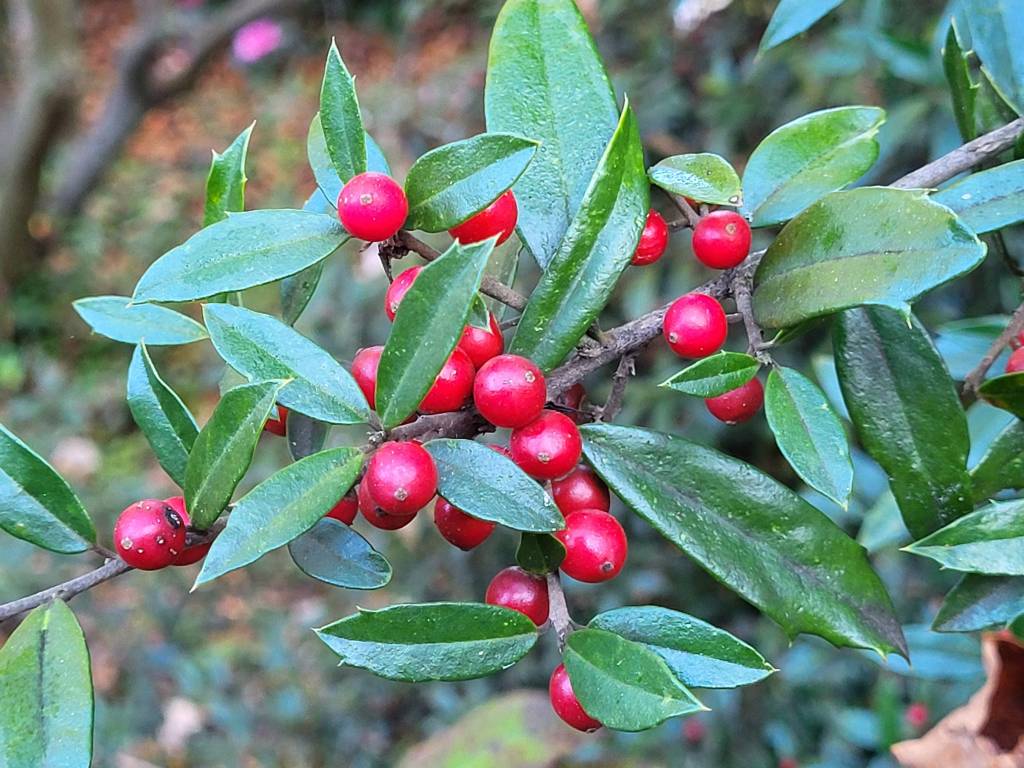
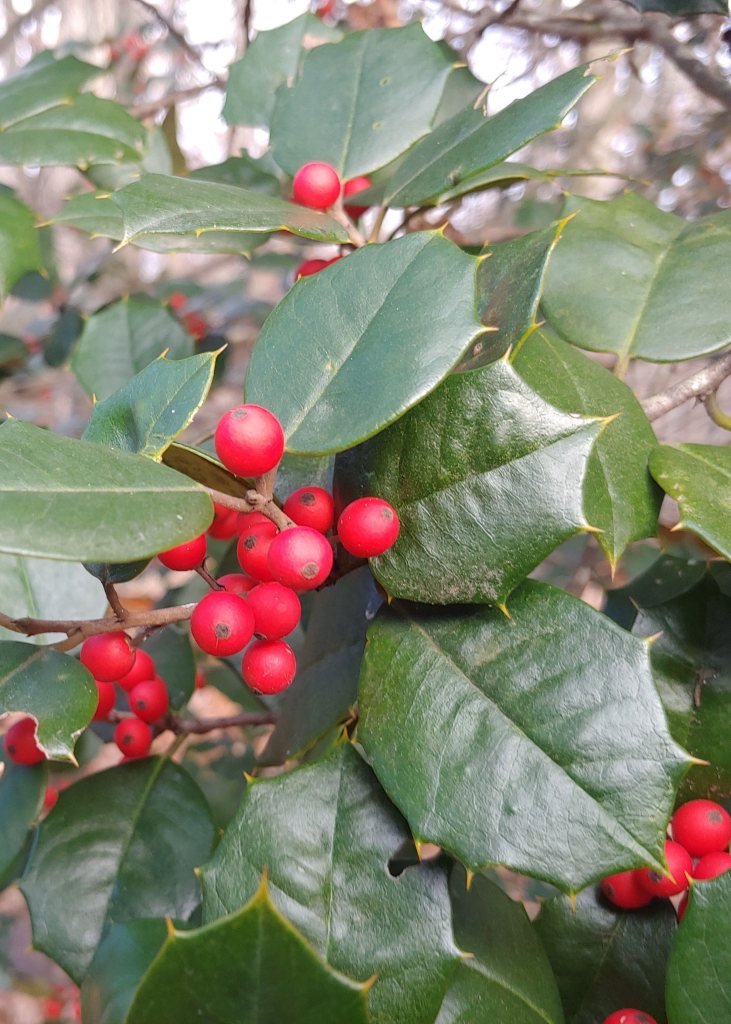

Amazing plants. That Batwing maple is stunning…on the hunt now for one myself 🙂
My batwing came from MrMaple. It’s small, but it grew a foot this year. Deer nipped off a second, lesser growth, so while I’ve never had to spray a repellent on other maples, this one will get it.
Great, thanks